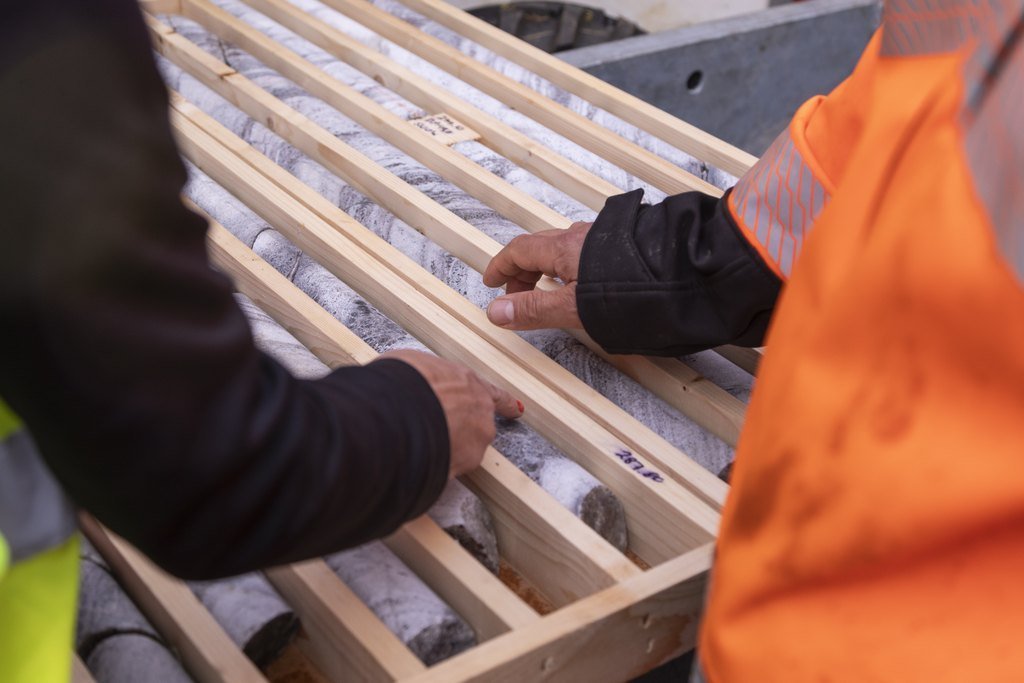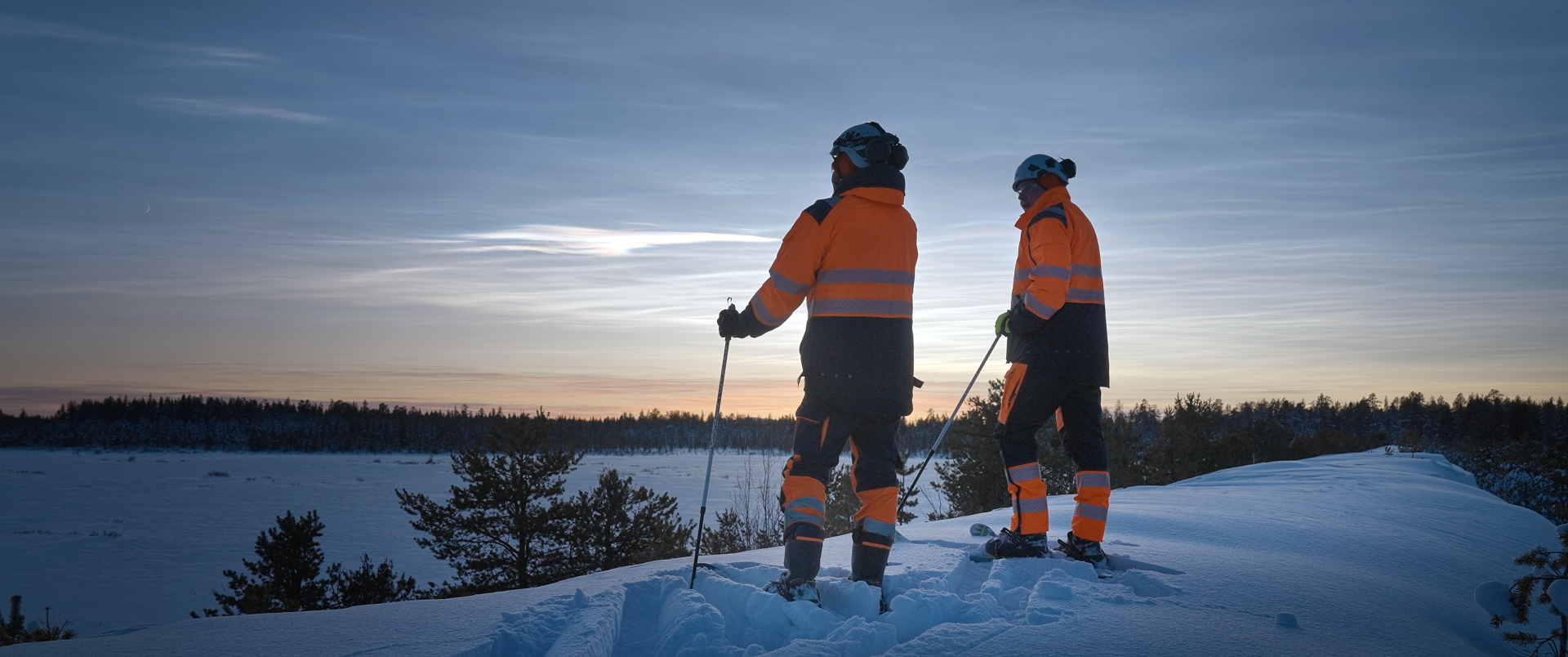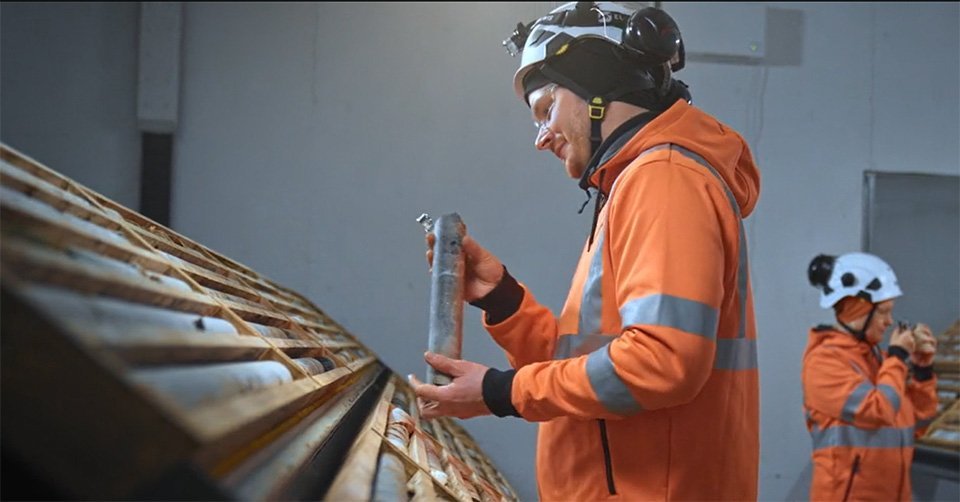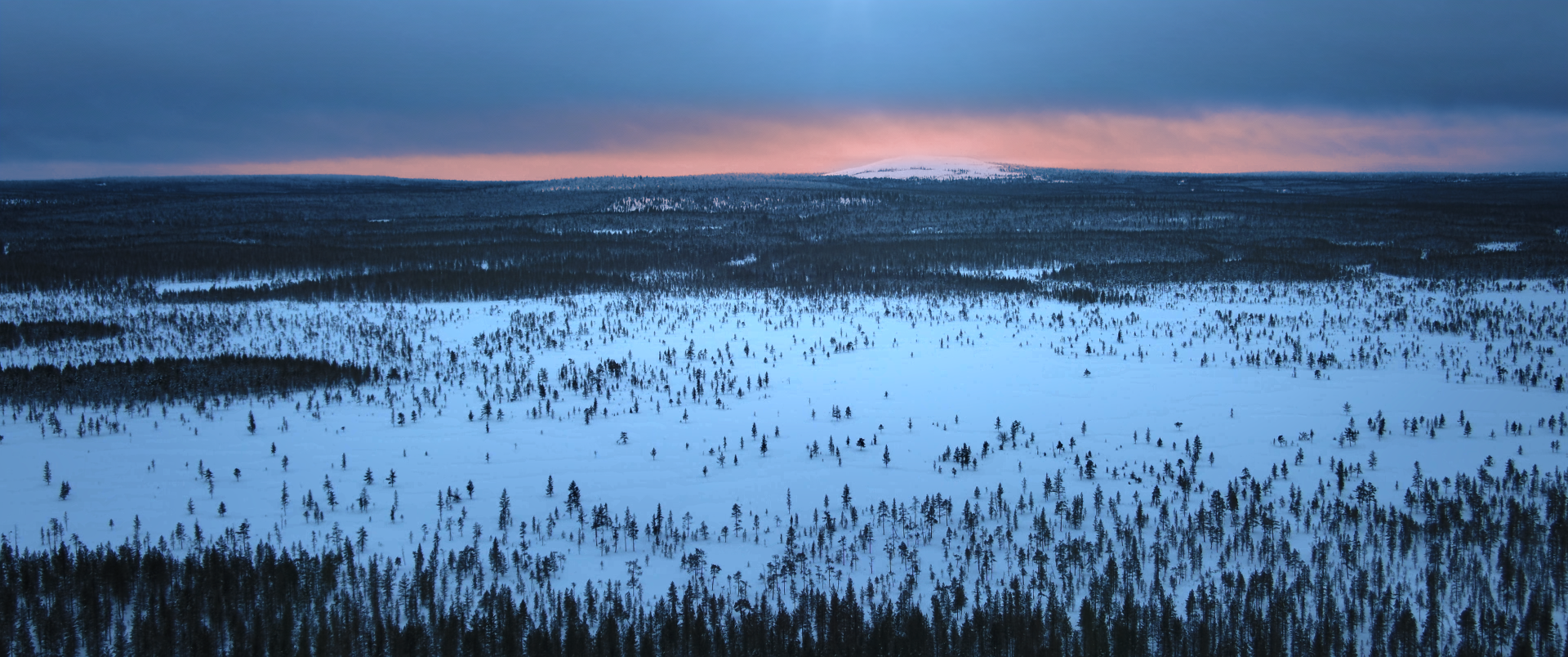Frequently asked questions
The most common questions about the project have been collected on this page.
A broad range of minerals can be found in Sokli, making it a dream for geologists and a nightmare for refinery engineers.
In terms of potential mining operations, the most important raw materials contained in Sokli's minerals are phosphate, rare earth elements, niobium and iron. There may also be deposits of tantalum, uranium, thorium, manganese, zircon, manganese, hafnium, strontium, copper and vermiculite.
The preliminary feasibility study covered phosphate, iron, rare earth elements (REE), niobium and uranium. Manganese, zircon and vermiculite were also considered, but there was insufficient data available to conduct a preliminary feasibility study.
We are currently considering which options to explore in the techno-economic feasibility studies that are scheduled to begin in early 2026. Environmental impact assessments and permit procedures will also commence at that time. A final decision on whether to invest in and build the mine is expected in the early 2030s, after which construction of the mine structures would commence. Production would begin in the late 2030s.
We estimate that the mine could remain operational for decades, depending on the ore being mined, its location, and the size of the area being mined. However, as few deep studies of the Sokli deposit have been made to date, further research into what lies below the surface may indicate a significantly longer operating period.
Various options have been considered, and the placement of operations will be investigated in more detail in the feasibility studies. In these studies, we will evaluate things such as various quarry options, transport alternatives, and which operations to locate in Sokli.
We are currently investigating how to transport ore from Sokli to Kemijärvi. In addition to road and rail transport, the ore could be transported via an underground pipe to a refinery somewhere between Sokli and Kemijärvi. Compared to an alternative in which raw materials are transported by road to a railway station or other downstream transport location, using a transport pipe would significantly reduce noise and other environmental impacts.
In the first-phase study, the Sokli site’s entire mineral potential was investigated, including whether it would be feasible to mine the deposit from a techno-economic perspective. Some of the information used in a scoping study may be preliminary data. For example, the study’s plans and level of accuracy are not sufficient to launch an environmental impact assessment or environmental permit processes. A scoping study presents a number of preliminary alternatives for implementation.
We have undertaken this research to provide information on how to implement the project responsibly and profitably. We have now comprehensively surveyed the site’s mineral resources and the profitability of mining operations, as the previous studies were based on the production of phosphate and iron. We have also addressed the development needs and stakeholder concerns that were raised during the earlier permit process. Mitigating climate change is a global challenge that requires mining operations and the rare earth elements that are necessary for the green transition.
Today’s very preliminary estimate is that establishing a mine would require investments totalling approximately EUR 1–1.5 billion.
Based on the recently completed scoping study, the project seems financially profitable. The analysis indicates that we should continue our investigations.
The potential impacts on waterways and the environment will depend on exactly how the mine is implemented. Water management will be important in this project. We are working to safeguard the trout habitat in the River Nuortti as well as to minimise changes in surface water and groundwater. We are also seeking to produce primary products with minimal waste. Traffic will have an impact on residential areas and reindeer husbandry, but the preliminary results indicate that we have already found new solutions that will help to minimise environmental impacts.
In mining operations, ‘mining waste’ refers to the tailings and waste rock that are generated during production. The exact nature of this waste may be determined with further studies, and waste areas will be designed and constructed in a way that will minimise their environmental impact.
We will also take the circular economy into account in all of our planning. According to current data, the extractive waste resulting from mining operations will be benign. No waste will be generated while the scoping study is being carried out.
If the project progresses to the implementation phase, planning work will pay particular attention to minimising environmental impacts. We are aiming for a process that generates minimal mining waste, and in which by-products will play a significant role in production.
Environmental responsibility involves designing production using the most appropriate technologies. When issuing an environmental permit, the permitting authority will impose limits that the operator must comply with in its operations. The mine’s operations and environmental impacts will be continuously monitored in accordance with the monitoring programme specified by the authorities. During the mine’s operation, its production processes will be developed and care will be taken to minimise the mine’s environmental impacts. The operator must be aware of the risks and environmental impacts of their operations, and must minimise these impacts in accordance with the terms and conditions of their permit.
We negotiated with reindeer-grazing associations when the mining concession was executed. We have also identified the impacts, and are maintaining continuous dialogue with reindeer-grazing associations. The impacts will be revised as necessary with the aid of follow-up studies. We are working to safeguard livelihoods in the region. If reindeer husbandry does suffer any detrimental effects from mining, we will compensate them.
We have now conducted some scoping studies for mining in Sokli, and we already knew that there is uranium, which is to be found in almost all Finnish bedrock. If we mine in areas with concentrations and quantities of uranium that are sufficient for commercialisation, uranium will be processed and utilised. If a permit to start up mining operations is obtained, any further clarifications required by the Radiation Act will be made before operations commence.
Based on an inspection report from the Radiation and Nuclear Safety Authority (STUK), natural radiation exposure in the area does not exceed the reference values. There is therefore no danger to any humans or animals in the area.
No decisions have been made concerning the launch of mining operations in Sokli or the potential utilisation of its uranium. The Nuclear Energy Decree states that ore must have a uranium content of at least 1,000 mg/kg (ppm) to be considered uranium ore. The highest single analysed concentration in the drillings performed in Sokli was less than half of this, and the average concentration of uranium was 30 ppm, which is 1/30th of the concentration of uranium ore. Any potential follow-up studies will also take the requirements of the Nuclear Energy Act and Decree into account.
We engage in continuous dialogue with stakeholders, and work together to find the best solutions with respect to both parties’ views. We have set up an office in Savukoski, where we have organised “open doors” type discussions on a monthly basis. We also organised open-doors events in Sokli during the summers of 2022 and 2024. We have developed our feedback system, and have written monthly bulletins to inform people about current issues and the studies being carried out in the Sokli area.
We commissioned Taloustutkimus to conduct a survey in spring 2023. About 70 per cent of Savukoski residents were in favour of the Sokli mine, as long as it is implemented in an environmentally responsible manner. The majority of locals are therefore in favour of the project, as long as it is carried out in an environmentally sustainable manner and local livelihoods are taken into account.
Industrial operations will always have an impact on local conditions. However, our goal is to minimise these effects. We engage in continuous dialogue with our various stakeholders to ensure that we are aware of people’s concerns. Such concerns usually diminish when companies comply with permit conditions and best practices. Trust is built through long-term efforts and concrete evidence.
Finnish bedrock is a good source of raw materials for a number of primary products, and the types of ore that occur will depend on the special characteristics of the bedrock in question. It is simply not possible to establish a mine in any old place – you have to find a deposit that is feasible to mine from a techno-economic perspective. We aim to find solutions that will allow a number of different businesses to operate side-by-side.
Mining will bring prosperity to the region’s economy, and the impacts will in practice be felt across the entire country. In addition to directly creating new jobs, the mine will have a broad impact on businesses and service offerings in other industries. It would also help to improve transport connections in the area.
In particular, the mine would help to revitalise the Municipality of Savukoski through new jobs and tax revenues from the mine. The mine would expand the municipality’s economic structure on several fronts. We have been employing locals during the study phase, which means that the mine is already increasing wellbeing in Savukoski.
It is not possible to provide employment estimates at this stage. Local people and services have been used whenever possible during the study phase. There will be more job opportunities as the project grows and progresses.
We have been seeking a variety of suppliers with sufficient skills and the capacity to operate responsibly in all areas, starting from occupational safety. We use locals and other operators from Northern Finland as much as possible. The Finnish Minerals Group also has a set of sustainability principles that we use to select suppliers of both goods and services.
Rare earth elements are used in permanent magnets, which are needed in, for example, electric cars and wind turbines. They are also required by the defence industry and in the manufacture of consumer electronics.




